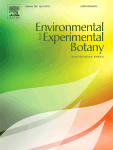Ver ítem
- xmlui.general.dspace_homeCentros Regionales y EEAsCentro Regional Patagonia NorteEEA BarilocheArtículos científicosxmlui.ArtifactBrowser.ItemViewer.trail
- Inicio
- Centros Regionales y EEAs
- Centro Regional Patagonia Norte
- EEA Bariloche
- Artículos científicos
- Ver ítem
Following the star: Inflorescence heliotropism
Resumen
Plant movements in response to directional solar radiation, known as “heliotropism” are frequently observed in nature. Although there is a considerable amount of literature on these movements in vegetative organs, knowledge about heliotropic responses in flowers and inflorescences is relatively limited. Here we comprehensively review studies on this topic, profile the diversity of responses encompassed under the term “heliotropism” and propose a
[ver mas...]
Plant movements in response to directional solar radiation, known as “heliotropism” are frequently observed in nature. Although there is a considerable amount of literature on these movements in vegetative organs, knowledge about heliotropic responses in flowers and inflorescences is relatively limited. Here we comprehensively review studies on this topic, profile the diversity of responses encompassed under the term “heliotropism” and propose a conceptual framework for their classification. In addition, we discuss the mechanisms underlying different types of heliotropism in two species commonly used as model systems: Arabidopsis and
sunflower. Finally, the ecological consequences of floral heliotropism are elaborated with an emphasis on the effects on plant reproductive success, and the potential agricultural implications of manipulating heliotropic responses are addressed as well. We conclude that inflorescence heliotropism appears conserved in many plant species that depend on pollinators, and consists of an auxin dependent response to solar radiation.
[Cerrar]

Autor
Serrano, Alejandro M.;
Arana, María Veronica;
Vanhaelewyn, Lucas;
Ballare, Carlos Luis;
Van Der Straeten, Dominique;
Vandenbussche, Filip;
Fuente
Environmental and Experimental Botany. 147 : 75–85 (March 2018)
Fecha
2018-03
Editorial
Elsevier
ISSN
0098-8472
Formato
pdf
Tipo de documento
artículo
Palabras Claves
Derechos de acceso
Restringido
 Excepto donde se diga explicitamente, este item se publica bajo la siguiente descripción: Creative Commons Attribution-NonCommercial-ShareAlike 2.5 Unported (CC BY-NC-SA 2.5)
Excepto donde se diga explicitamente, este item se publica bajo la siguiente descripción: Creative Commons Attribution-NonCommercial-ShareAlike 2.5 Unported (CC BY-NC-SA 2.5)

